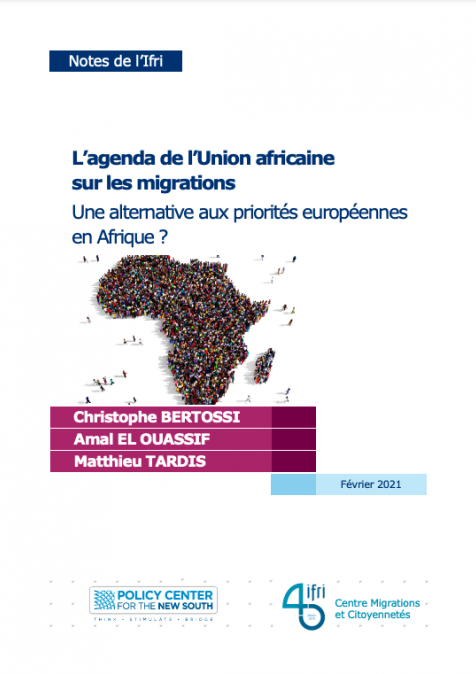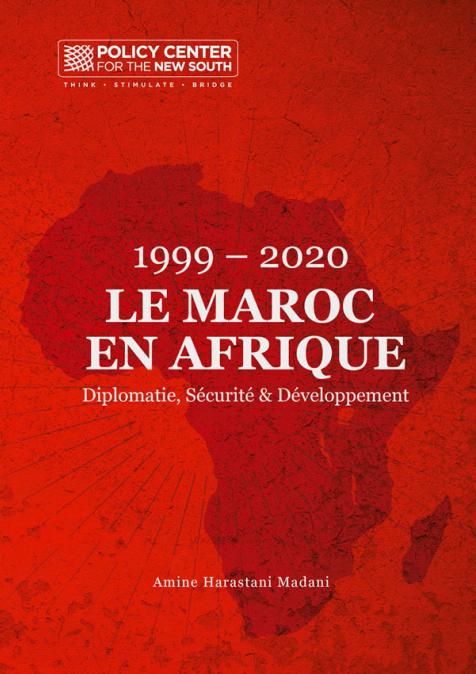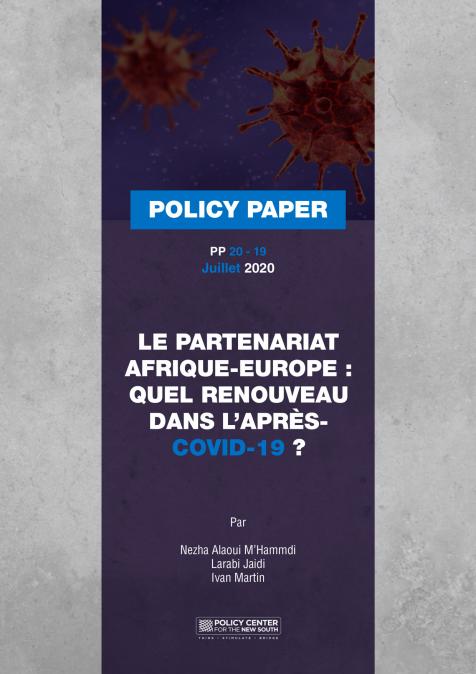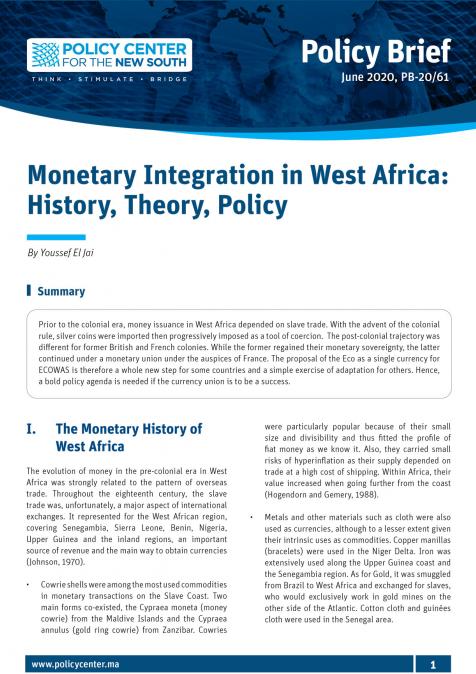Publications /
Policy Brief
One aim of COP27 was to persuade countries to make commitments to reduce emissions and earmark resources for technologies to be transferred from industrialized states to less developed states. Hovering over the COP27 was the reluctance of wealthy states to live up to their 2009 commitment to provide $100 billion to poor countries, financial assistance for adaptation (as opposed to just mitigation projects), and more compensation for what the Paris Agreement termed “loss and damage,” that is recompense for destruction already wrought by climate change. This year’s gathering is the first where “funding arrangements” for “loss and damage” were included on the agenda, to the displeasure of the US and European Union who fear liability.
INTRODUCTION
In November 2022, representatives of two hundred states gathered in Sham al-Sheikh, Egypt for the COP27 summit to coordinate how to address multiple climate threats facing the planet: the rising emission levels post-pandemic, the mounting sea levels, floods, heat waves, drought, and wildfires that have afflicted various parts of the globe. The Conference of the Parties (COP) summits are organized under the United Nations Framework Convention on Climate Change, launched at the 1992 Rio Earth Summit. One aim of COP27 was to persuade countries to make commitments to reduce emissions and earmark resources for technologies to be transferred from industrialized states to less developed states. Hovering over the COP27 was the reluctance of wealthy states to live up to their 2009 commitment to provide $100 billion to poor countries, financial assistance for adaptation (as opposed to just mitigation projects), and more compensation for what the Paris Agreement termed “loss and damage,” that is recompense for destruction already wrought by climate change. This year’s gathering is the first where “funding arrangements” for “loss and damage” were included on the agenda, to the displeasure of the US and the European Union who fear liability.
Global South counties, led by China, have long argued that they are facing climate threats because policies pursued by industrialized states since the 1850s have increased the planet’s temperature, and led to great economic losses, and the destruction of resources and heritage. “Loss and damage” is basically a diplomatic way of speaking of climate reparations, and was raised by countries in the Pacific. Other developing countries have since joined the campaign. Currently, estimates of the money for climate reparations range from $290 billion to $580 billion per year by 2020, rising to $1.7 trillion by 2050.
Much was said about how relations between the West and the Global South, the West, and rising powers like China and Russia, could undermine the COP27 meeting. In Glasgow, at COP26, China reached a historic agreement with the US (recently suspended in light of Nancy Pelosi’s visit to Taiwan.) Similarly, it was feared that Russia, embroiled in a war with Ukraine would opt to undermine possible agreements. Geopolitics hovered over COP27 in another way: numerous reports have noted that climate can be a threat-multiplier, exacerbating ongoing inter- and intrastate conflicts in climate-fragile regions. In East Africa, for instance, extreme weather has worsened conflict in South Sudan, Somalia, and Kenya. One ICG report notes that drought in Kenya’s Laikipia Plateau has sparked violence between herders and farmers leaving dozens dead, in the lead-up to elections. A severe drought in Somalia has devastated livestock and set the stage for famine. In Ethiopia, drought has exacerbated the humanitarian situation created by the war between Addis and Tigray. The war in Yemen has made that impoverished country even more vulnerable to climate stress. This piece looks at the link between climate stress and conflict and examines policies introduced by Global South states.
CONFLICT & CLIMATE
Glada Lahn of Chatham House has observed that, regarding climate change, the Middle East, and North Africa (MENA) is a “uniquely exposed region.” It is one of the world’s most water-scarce regions. Demographic growth, urban expansion, and dam construction have further strained water resources in recent decades. Flooding, ironically, has become one of the extreme weather events afflicting the region as seen recently in Jeddah, Saudi Arabia, and Sana’a, Yemen (even causing damage to the Old City of Sana, a UNESCO World Heritage Site). According to the World Bank, around 45% of agricultural land in the Middle East and North Africa region is suffering from erosion, depletion, and salinity. Civil wars and insurgencies in Syria, Libya, Yemen, Iraq, and Palestine have led to the destruction of infrastructure and water facilities. As climate stress increases, an estimated 90% of the 300 million people exposed to heat waves will be in the region’s urban centers.
Different states, of course, have different capacities for responding to climate stress. One recent study notes that Saudi Arabia can avail itself of the global commercial interest in sustainable development even as its policies wreak environmental devastation in Yemen. As Tobias Zumbragel has demonstrated, the ongoing conflict in Yemen has aggravated climate-related duress, increasing the frequency of heat waves, cyclones, and flash floods, while Saudi Arabia and the United Arab Emirates, heavily involved in the war on Yemen, still have the capacity to domestically “greenwash” massive infrastructure energy projects. Given their diminishing aquifers, Gulf states have also purchased land in East Africa for farming. Recent reports note that Saudi and Emirati companies have also begun purchasing farmland in the United States, specifically in Arizona. Saudi Arabia, with its limited rainfall, has difficulty growing food crop , as the number of livestock farms in Saudi Arabia has grown. The Saudi firm Almarai thus set up Fondamente, an American subsidiary to grow crops like alfalfa, which is then exported back to the Middle East.
In his study on “climate urbanism” in the Arabic-speaking world, scholar Deen Sharpe mitigation and adaptation efforts introduced at the city level over the last 20 years, in the transportation, housing, energy, and waste sectors have been mainly top-down rather than bottom-up. From the Maghreb to the Gulf states, regimes have tended to exert tight control over budgets and exhibited a penchant for high-profile mega-projects. Arab climate urbanism tends to be centered around high investment in the public transportation system and construction of green-building codes and is partly financed through the issuance of “green” bonds (that is Islamic-compliant bonds - a Malaysian “innovation effort”). In middle- income countries like Lebanon and Jordan, activist campaigns will sometimes successfully elevate environmental issues to the national policy level, though depending on the regime’s response. In Jordan, for instance, the regime was able to limit protests surrounding water scarcity by casting individual consumption and external actors (like Israel) as a reason for the scarcity and portraying water supply projects like the Disi aquifer initiative (to provide water to the capital city Amman) as crucial to Jordan’s national security and sovereignty. In Lebanon, environmental campaigns (deploying the hashtags #YouStink and #SaveBishri) became part of a national debate, intensified by the tragic explosion in Beirut’s port in August 2020.
Recent research has contested the claim that Syria’s civil war was partly caused by human-induced climate change. It’s been argued that a severe drought in northeastern Syria caused massive-out migration from that area, worsening economic conditions and sparking the 2011 protests which culminated in a horrific civil war. This narrative, put forth by development agencies and Western diplomats alike, is also advanced by the Syrian regime to distract from its own disastrous policies. Studies have posited that climate change made the drought of 2006 to 2009 more likely, but the subsequent claim that the drought triggered a downturn in agricultural production that pushed 2.3 million people into extreme poverty and displaced 1.5 million from northeast Syria to Damascus, Aleppo, and other southern cities is untenable. According to United Nations reports, an estimated 40,000 to 60,000 families were indeed displaced, but a key trigger to their out-migration was a presidential decree passed by Bashar Al Asad in 2008, which tightened restrictions on land sales in the northern province of Hasakah leading to a loss of land rights. Likewise, the cutting of input subsidies in 2008 and 2009, “formed a greater burden [on farmers] than the successive years of drought and spurred their decision to abandon their land.” Critics also point out that neighboring countries experienced similar droughts without internal displacement and outmigration.
CLIMATE THREATS IN AFRICA
Africa is often overlooked in international policy conversations about climate change, except when South Africa’s role as an emitter is mentioned. But the continent has not been spared extreme weather events. The Algerian and Tunisian wildfires of August 2021, lend support to the IPCC report’s dire warnings. As wildfires raged on both sides of the Mediterranean, temperatures in some North Africa and Middle Eastern hit record highs Recent research shows that rising temperatures and increased rainfall variability are undermining food security for farmers across Eastern and Southern Africa, most of whom are already living at subsistence levels. Poor governance and inadequate data on future climate change are making farming a more hazardous enterprise. Experts note that weather data tools like climate wizard.org and ServirClimateServe are useful, but local farmers still need to have access and training to use them.
The situation in West Africa is particularly grim. A recent report titled, “West Africa at the Precipice” paints a picture of climate stress and insecurity in that region, highlighting the susceptibility of fragile states to climate change. According to the World Bank, 6500 square kilometers of the coastal areas in West Africa could be degraded by rising sea levels, and as population rates swell, making the region home to an estimated 85 million people by 2050.Rising sea levels are already leading to skirmishes over fishing grounds between Senegal and Mauritania. Irregular rainfall has made life more precarious for the estimated 25 million Sahelian herders, who travel south during the dry season, and then north during the rainy season. Millions have been displaced in Mali, Togo, Senegal, and Ivory Coast.19 And the conflict has broken out on the frontier between Burkina Faso and Mali, and in Nigeria’s “Middle Belt” region.
An emerging field of research is looking at how the shift away from carbon to renewable energy will impact fragile states that rely heavily on oil. The argument here is that “traumatic decarbonization,” could undermine peace accords and reignite conflict in different parts of Africa, just as the transition towards a green economy could spark conflict over oil and key minerals. As a recent study by USIP (June 2021) states, institutions of governance and rule of law in fragile states are weak, with politics often revolving around bargains between political heavyweights, that is intra-elite agreements financed by oil money. Incumbents use oil revenue to stave off foes and placate allies, so when oil prices drop as happened in the 2010s, peace accords become more difficult to sustain.
As political scientist Alex de Waal wrote recently, the transition to a “global green economy” will not simply unleash power struggles over existing resources but will also lead elites of oil-reliant states to seek new revenue in mining or illicit activities which could trigger even more conflict. For instance, when Sudan lost oil revenues, following the secession of South Sudan, Khartoum began getting new revenue by renting troops to the Gulf States to be used in the war in Libya and Yemen. Similarly, in South Sudan, political leaders purchased the quiescence of armed groups with oil money; when said oil prices fell, a civil war broke out. In Nigeria, the COVID-19 pandemic and oil market competition led to a steep drop in oil prices in 2020. The West African nation which gets 65-85% of its government revenue from oil rents, found itself in the middle of a crisis. The Nigerian government would borrow massively to maintain a vast patronage system, in face of rising food insecurity, unemployment, and violent protests.
COLLECTIVE ACTON
Scholars for climate change have long argued that adjustment for zero global carbon emissions constitutes is a “public good” that is global public goods that all states can use. Provision of this public good is a problem of collective action, to paraphrase economist Mancur Olson. States may have an interest in reducing global warming, but since there is no global authority to enforce an agreement on greenhouse emissions, no major power wants to make cuts for fear of others “cheating” or that such a move to reduce emissions will leave it at a disadvantage. As Harvard scholar Stephen Walt has written, the COVID crisis illustrated how difficult it is to coordinate action among self-interested states. And the climate emergency is a much greater challenge, requiring getting the entire world to make adjustments for zero carbon emissions. For realists, major powers will act on climate change only if global warming and climate-induced migration is seen as a security threat; only then, will state begin providing assistance to help developing countries shift to renewable energy. The Copenhagen Accord of 2009 for instance, is based on this realist thinking and calls for international cooperation on adaptation, allocating $30 billion for adaptation and mitigation.
Liberal scholars of international relations, on the other hand, stress the importance of global governance and the pivotal role that the United Nations Environment Program (UNEP), UNFCCC Secretariat, UNDP, World Bank, and other international bodies will play in shaping the agenda, and global discourse around climate change. Realists retort that nation-states, especially the major powers, that dominate international organizations, and it is only state action that will empower the United Nations to act. Thus, Anatolie Lieven writes in his recent book, Climate Change, and the Nation-State (2021), international institutions like the UN may appear influential, but their mandates only serve to pressure nation-states into action. It is stated, galvanized by nationalism, that can address the climate emergency. He argues that only once governments frame climate change as a destabilizing force that will adversely affect a population’s security and welfare, will a civic nationalism, that valorizes fighting climate change, emerge and push states to act. Dependency theorists, in turn, observe that international financial institutions like the World Bank and the IMF are driven by American- style free market thinking that does not favor placing limits on private sector emissions. This is where constructivist scholars will respond by underscoring the role of transnational social movements and the role of discursive power, noting that it is “epistemic communities” of scientists and various transnational networks (NGOs, civil society organizations, etc.) that can disseminate knowledge and new norms thereby shifting popular attitudes and making it electorally costly for heads of states to ignore the climate crisis.
RISING HEGEMONS
Can rising powers of the Global South address the climate crisis and facilitate a transition to clean energy at the global level? China’s economic rise has led to much speculation. The Asian state is the largest emitter of carbon dioxide (releasing over 30% of carbon emissions in 2020), with America coming in second place with 13.5% percent. Yet when viewed historically, the US is responsible for roughly 20% of carbon dioxide emissions (since 1850) and China is second place with 11%. Viewed from a per capita basis, Beijing ranks behind the US and Russia with almost half their emissions. Moreover, paradoxically, China has also been a trailblazer in shifting from fossil fuels and has been adding more renewable energy capacity than any country. This year China is projected to install 156 gigawatts of additional capacity supplied by wind turbines and solar panels, 25% more than in 2021, which was Beijing’s record high. In contrast, the US is projected to establish 30 gigawatts of solar and wind power by the end of 2022. Observers also note that Chinese diplomatic weight is undergirding a number of climate agreements, including the 2014 bilateral climate accord between Washington and Beijing, which paved the way for the Paris Climate Agreement.
COP27 saw America and China jostling for the mantle of leader of the leadership of the climate issue. American policymakers are aware that China is the largest emitter of greenhouse gases, but it has also surpassed the US in the production of electric vehicles and solar power. Washington is hoping to challenge China’s putative leader leadership in climate diplomacy by introducing a series of new carbon reduction initiatives. The Biden administration is aware that green energy has become part of Beijing’s economic statecraft, in the developing world alongside the Belton Road Initiative. In 2015, Xi Jinping set up a 3.1 billion fund to help developing states deal with climate change. In April 2020, Vice Foreign Minister Xie Feng inaugurated a facility devoted to helping Pacific Island countries develop capacities to adapt to rising sea levels. Climate specialists think that the competition between Washington and Beijing can lead to more positive action. Biden highlighting the billions allocated to clear energy sources in the recently signed Inflation Reduction Act could prompt China to respond with more commitments. It’s not clear how much pressure the US can put on China given America’s own carbon emissions in 2020, but Xi Jingping has said that China’s carbon emissions would peak by 2030 and reach carbon neutrality by 2016 (that is, reach a state of net zero greenhouse emissions by offsetting emissions so that they are equal to or less than the emissions eliminated through the planet’s natural absorption.) Xi also declared in 2021 that he would begin to cut China’s dependency on coal by 2026. Yet the World Bank recently remarked China would need to invest an estimated 17 trillion in transportation and energy sectors alone to reach this net neutrality.
SHIFTING CURRENTS
In late October, the Brazilian leader Lula da Silva narrowly defeated his right-wing adversary, Jair Bolsonaro. In his victory speech, the Brazilian president-elect pledged to fight for zero deforestation in the Amazon, and to clamp down on illegal mining, logging, and land grabbing, indicating that he would restore Brazilian leadership on climate change. Under Bolsonaro, key environmental protections had been abrogated enabling more mining and farming that led to the destruction of the Brazilian rainforest forest to hit a 15-year high.33 Since Lula’s electoral victory, Norway announced that it will be unblocking a billion-dollar sum to protect the Brazilian rainforest that had been frozen when the right-wing Brazilian president was still in office. Climate activists hope that Lula’s victory could boost left-leaning Latin American governments to increase their commitments. Brazil has also entered into negotiations with Indonesia and the Democratic Republic of the Congo to cooperate on conservation by creating an “OPEC for rainforests,” bringing together the three large tropical rainforest countries – home to the Amazon, the Congo Basin, and the Borneo and Sumatra forest.34 The Brazilian president-elect has indicated that this green cartel could go on to include Peru and Colombia, which also have sizable rainforests. Relatedly, Colombia is considering creating an Amazon block. Electoral realignment and geo-political shifts in the Global South are bringing new thinking and policies to address the climate crisis.










